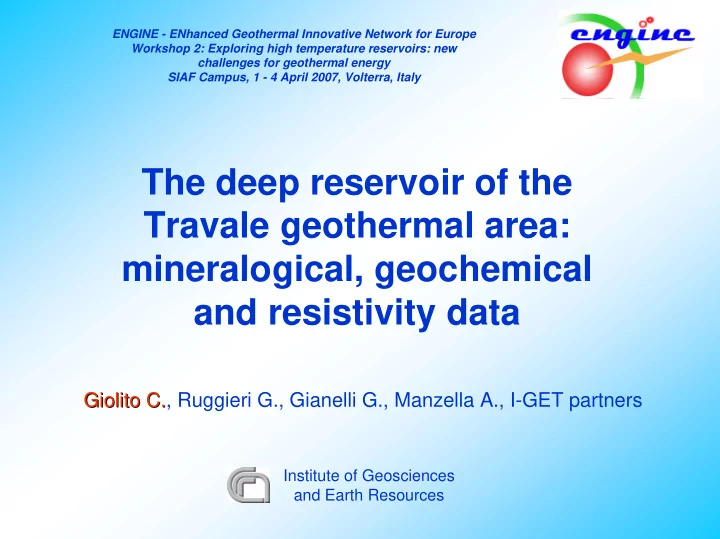

ENGINE - ENhanced Geothermal Innovative Network for Europe Workshop 2: Exploring high temperature reservoirs: new challenges for geothermal energy SIAF Campus, 1 - 4 April 2007, Volterra, Italy The deep reservoir of the Travale geothermal area: mineralogical, geochemical and resistivity data Giolito C., Ruggieri G., Gianelli G., Manzella A., I-GET partners Giolito C. Institute of Geosciences and Earth Resources
Explain the anomalies in resistivity values Explain the anomalies in resistivity values observed in the deep reservoir observed in the deep reservoir of the Travale area of the Travale area • the lithology and the alteration affecting the reservoir rocks • the physico-chemical characteristics of the fluids • their distribution and evolution with time
Anomalous values can be related to Anomalous values can be related to • the heterogeneities in the reservoir rocks • the abundance and type of alteration minerals • the presence of brines brines, whose interconnection would be sufficient to produce electrolytic conduction Fluid T ( °C) P (MPa) H2O + NaCl (*) 300-350 3-7 (vaporstatic) calibrate petrophysical petrophysical 25-40 (hydrostatic) experiments in order to experiments H2O + NaCl (^) 350-500 40-100 (lithostatic) reproduce the realistic realistic H2O + NaCl + CO2 + CH4 (°) 350-500 40-100 (lithostatic) physical condition of the physical condition of the (*) 0-1 wt % NaCl eq. deep reservoir deep reservoir (^) up to 50 wt % NaCl eq. (°) up to 50 wt % NaCl eq., pure CO2 or CO2 + CH4 mixture 50:50 (molar)
Recommend
More recommend